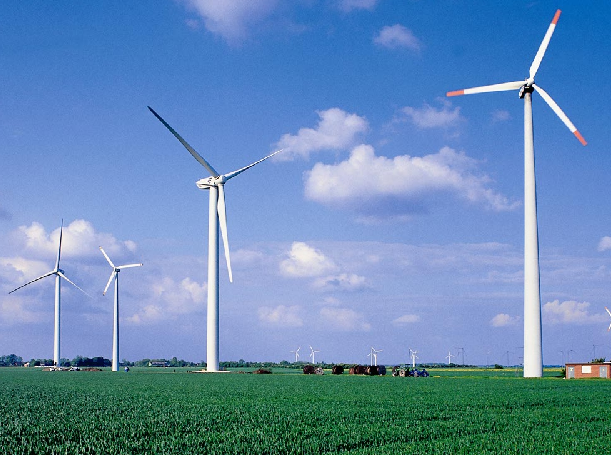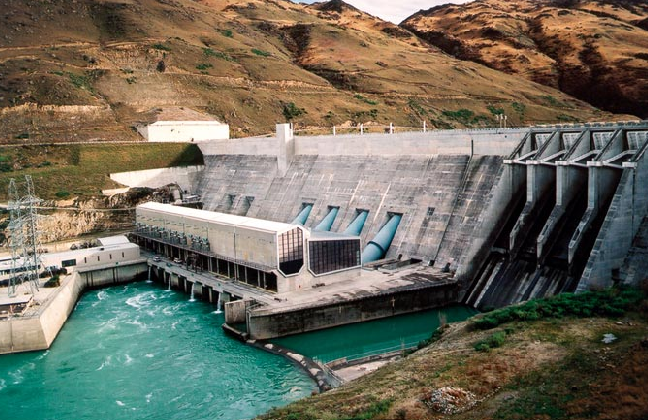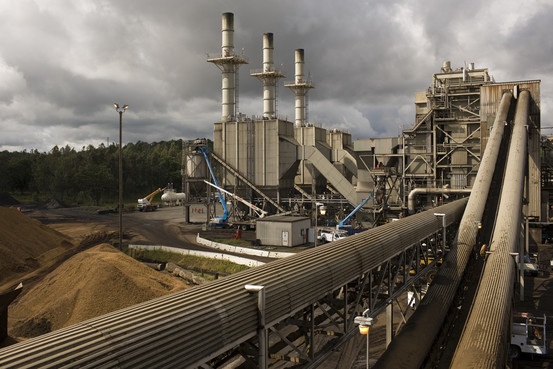Fuels we rely on every day, such as coal, oil and natural gas, are non-renewable. Once a deposit of these fuels is depleted it can't be replenished, and it's no secret we're running out of our planet's precious fossil fuels. In contrast, there are many renewable sources of clean energy that can be used instead. Read on below to learn about the top alternative power sources we're using today.
Solar power
Simply put, solar power is the conversion of sunlight into electricity. Technologies that use the sun's energy provide heat, light, hot water, electricity, and even cooling for homes and businesses.
Because there are different energy needs, there are various types of solar collectors used to harness the sun's power. Passive solar building designs, for example, capture the sun's heat to provide space heating and light, while photovoltaic cells are used to directly convert sunlight to electricity. Concentrating solar power systems focus sunlight with mirrors to create high-intensity heat to produce steam or mechanical power to run a generator, and as for hot water or space heating, flat-plate collectors absorb the sun's heat directly into water or other fluids.

Photovoltaic cells are used to directly convert sunlight to electricity. Image via varshinipower.com.
Though solar technologies produce few negative impacts on the environment, there are concerns associated with the production of collectors and storage devices. Although sunlight is free, solar cells and other required equipment are expensive. According to nationalatlas.gov, solar power provides less than 1% of U.S. energy needs, but the percentage is predicted to increase with the development of new and more-efficient solar technologies.
Wind energy
People have used wind to pump water and grind grain for hundreds of years. These days, large, modern wind turbines are used to generate electricity, either for individual use or to contribute to a utility power grid. Usually wind turbines have two or three blades, and because winds above ground are faster than those near the surface, the turbines are mounted on top of tall towers, ensuring they capture the most energy. When the blades propel, the central shaft spins a generator to create electricity.

Wind energy generates electricity without polluting the environment. Image via evwind.es.
Wind energy can generate electricity without polluting the environment and today it's the fastest-growing of energy technologies. One downside to this source of alternative energy is wildlife deaths, though recent studies suggest they're lower than the number of deaths caused by colliding into other tall manmade structures, such as buildings. With older turbine designs, noise was an issue, but through improved engineering, most problems related to noise have been eliminated.
Hydropower
Water is the most common renewable resource in the United States, so using water to generate electricity makes sense. To store water, many hydroelectric power plants use a dam on a river, and the water released behind the dam flows through a turbine, spinning it, which turns a generator to produce electricity. This process is called hydroelectricity, and it accounts for about 7% of the electricity used by the nation, according to nationalatlas.gov. A small hydroelectric power system can produce enough electricity for a home or farm.

Hydroelectricity accounts for about 7% of the nation's electricity use. Image via fastcompany.com.
The downside to hydroelectric dams is that they all have some environmental impact. A dam may create a reservoir that can flood a large area upstream and can also change flow patterns, impacting downstream flooding. Fish migration has been a major concern, but is often addressed with fish ladders and other structures to make sure fish move both upstream and downstream.
Biomass power
Biomass power is obtained from the energy in plants and plant-derived materials, such as crops, grassy plants, and residues from forestry or agriculture. These energy crops, combined with high-efficiency conversion technologies, are capable of supplementing our overconsumption of fossil fuels.

A biomass power plant. Image via online.wsj.com.
As many know, wood has been used for energy longer than any other biomass source, and it remains the largest biomass energy resource today. The number one source of energy from wood is pulping liquor, or “black liquor,” a waste product from processes of the pulp, paper, and paperboard industry. Municipal solid waste, manufacturing waste, and landfill gas are the biggest contributors of waste energy, making waste energy the second-largest source of biomass energy.
Biomass is often used to direct heating (such as burning wood in a fireplace or wood stove), for generating electricity, and it can also be converted into liquid fuels to meet transportation energy needs. Because biomass power is produced from plant sources, it can be produced just about anywhere in the United States.
Though it's a renewable resource, biomass power reduces biodiversity and can negatively affect wildlife habitat. But with the use of appropriate technology, it can promote a positive impact on the environment.
The future of power lies within alternative power sources that harness natural energy without damaging the environment. Due to our current rate of fossil fuel usage, civilization will soon be forced to research and develop alternative energy sources. Many companies in the energy industry are already inventing new ways to extract energy from renewable sources. Though the rate of development is slow, mainstream awareness and government pressures are growing.
Have anything to add? Leave a comment below.
Advertisement
Learn more about Electronic Products MagazineMouser Electronics





